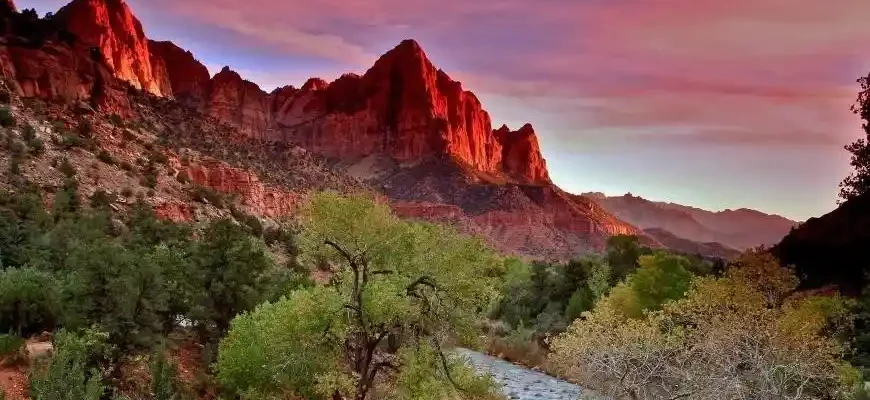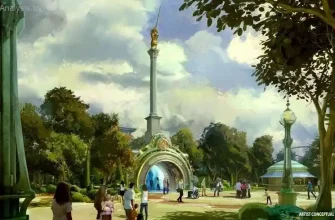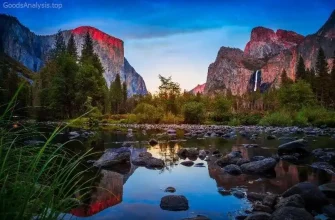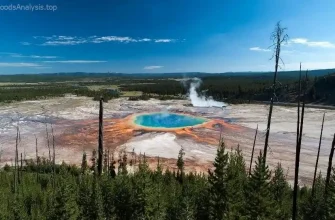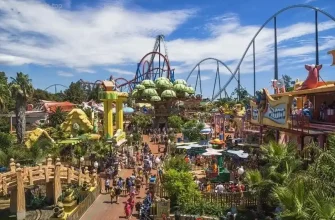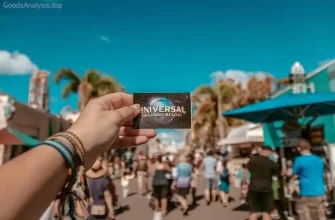Zion National Park, located in the southwestern corner of Utah, is one of the most iconic natural wonders in the United States. With its towering sandstone cliffs, narrow slot canyons, and vibrant desert landscapes, Zion is a must-see destination for adventurers, photographers, and nature lovers alike. Whether you’re planning a short visit or an extended stay, here’s everything you need to know to make the most of your time at Zion National Park.
1. What Makes Zion National Park Special?
Zion National Park is a place where geology, ecology, and breathtaking beauty converge. The park is famous for its towering red rock formations, slot canyons, and diverse plant and animal life, making it a visual and ecological wonder. Zion is also known for its massive cliffs of Navajo sandstone, the tallest of which is the 2,000-foot-tall (609 m) Great White Throne. The park’s dramatic landscape and striking colors make it one of the most photographed places in the world.
Key Attractions in Zion National Park:
- The Narrows: One of Zion’s most iconic hikes, The Narrows takes you through the Virgin River as it winds its way through a deep, narrow canyon. You’ll be wading or even sometimes swimming through the river, surrounded by towering canyon walls on either side. It’s an unforgettable experience, but be sure to check conditions before you go, as flash floods can be a serious danger.
- Angels Landing: For adrenaline seekers, the hike to Angels Landing is a must. This strenuous and exposed trail ascends 1,500 feet (457 m) up to a narrow ridge with dizzying views. The last section is a chain-assisted scramble, so it’s not for the faint of heart, but the panoramic views from the top are absolutely worth it.
- Canyon Overlook Trail: If you’re looking for a shorter, family-friendly hike that still offers incredible views, the Canyon Overlook Trail is perfect. It’s only 1 mile (1.6 km) round trip and provides sweeping vistas of Zion Canyon.
- Kolob Canyons: Located in the northern section of Zion, Kolob Canyons offers a more remote experience with fewer crowds. The area is known for its striking red cliffs and is an excellent spot for hiking, photography, and wildlife watching.
- Zion Canyon Scenic Drive: This 6-mile (9.7 km) road runs through the heart of the park, offering easy access to many of Zion’s key attractions. In peak season, the scenic drive is accessible only by shuttle bus to protect the environment and reduce traffic, but the views from the bus are just as spectacular.
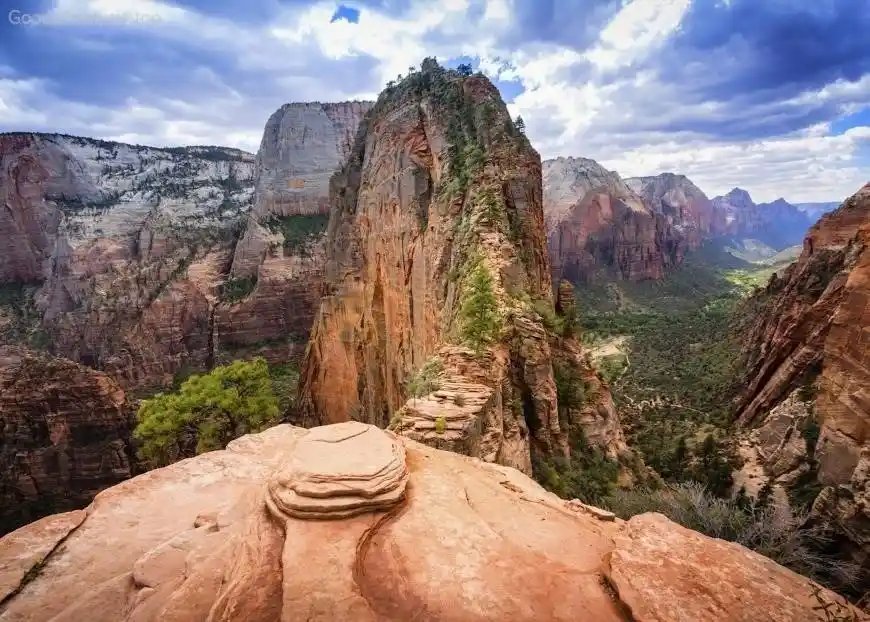
2. Visitor Tips & Practical Information
Best Time to Visit:
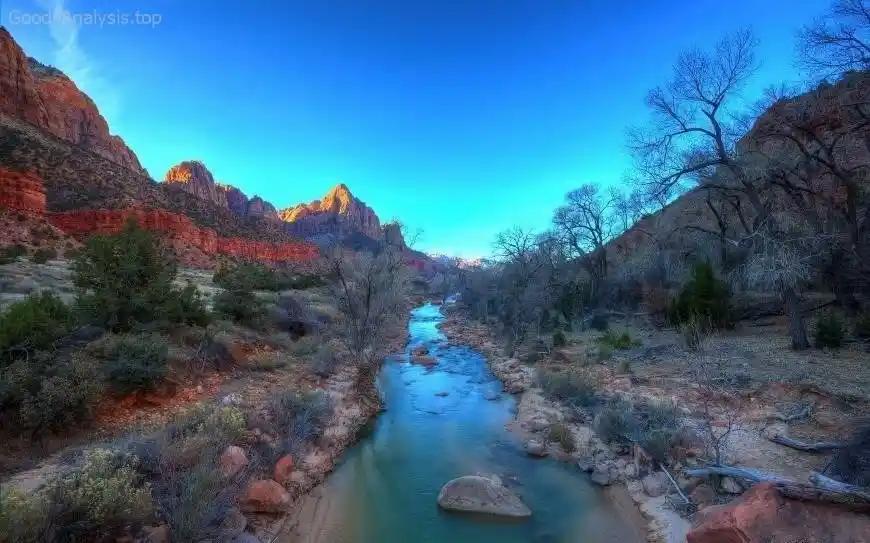
The ideal time to visit Zion is during the spring (March to May) or fall (September to November) when temperatures are mild, and the crowds are smaller compared to summer. Summer can be extremely hot, with temperatures reaching 100°F (38°C), and this is also the busiest time, so plan ahead if you’re visiting during peak season.
- Winter (December to February) can be a quieter time to visit, but be prepared for chilly temperatures and potential snow, especially at higher elevations.
Entrance Fees:
- Vehicle Entry: $35 for a 7-day pass (covers all passengers in a private vehicle).
- Individual Entry (for bikers, hikers, etc.): $20 for a 7-day pass.
- Annual Pass: $70, which grants access to Zion and all other National Park Service sites for one year.
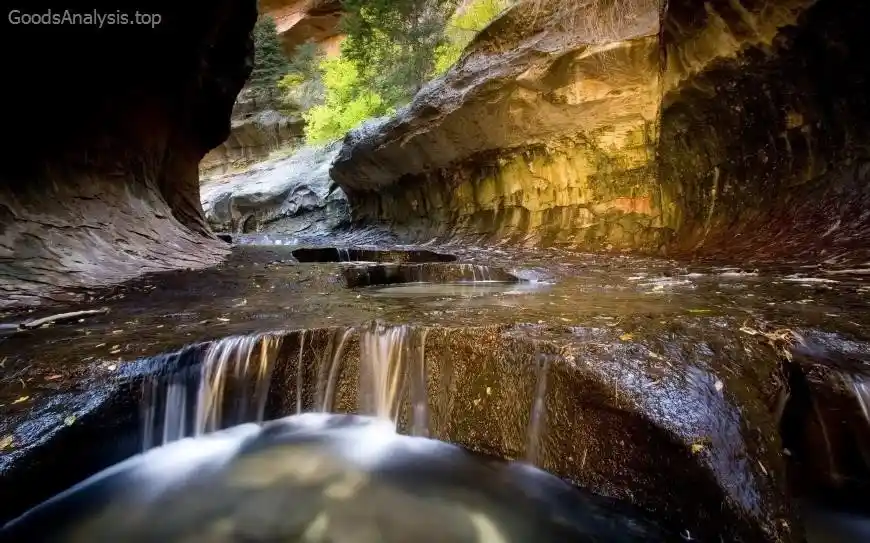
Hours of Operation:
Zion National Park is open year-round, 24 hours a day, though some facilities, including visitor centers and shuttle services, have more limited hours in the off-season. The main visitor center is open from 8:00 a.m. to 6:00 p.m. during the peak months.
Accessibility:
Zion offers a variety of experiences for different levels of mobility. Some of the easier trails, like the Riverside Walk, are paved and wheelchair accessible. However, many of the more strenuous hikes, such as Angels Landing and The Narrows, require physical fitness and caution. The park also provides accessibility services such as accessible shuttle buses.
3. History and Cultural Significance
Zion’s human history dates back over 12,000 years, with Native American tribes, including the Ancestral Puebloans, Southern Paiutes, and others, living in and around the region. The name “Zion” comes from the Hebrew word for “a place of refuge,” and it was first used by Mormon settlers in the mid-1800s. The area was officially designated a national park in 1919, making it the first national park in Utah.
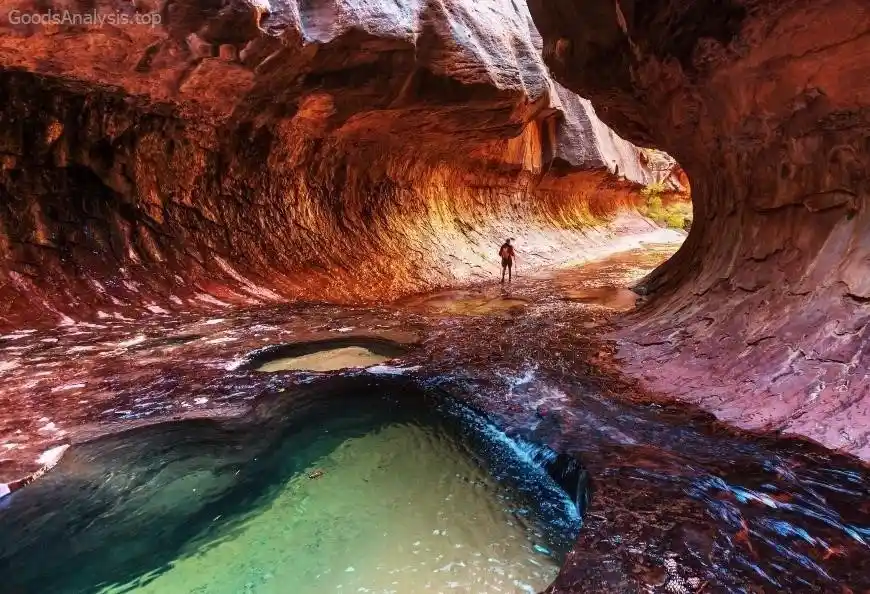
Zion holds deep cultural and spiritual significance, not only for the indigenous people but also for those who follow in the footsteps of early Mormon pioneers. The land was seen as a sacred refuge, and many of the park’s formations have biblical names—such as the Tower of Babel, the Court of the Patriarchs, and Angels Landing—reflecting the influence of Mormon settlers.
4. What to Expect When You Visit Zion National Park
The experience of visiting Zion is nothing short of awe-inspiring. From the moment you step into the park, you’ll be enveloped by its grand, colorful canyons, towering cliffs, and desert landscapes. You’ll also hear the hum of the Virgin River as it flows through the canyon. It’s a place where the pace slows down, and nature takes center stage.
The park can feel both serene and exhilarating. Whether you’re taking a quiet stroll along the Riverside Walk, conquering the strenuous ascent to Angels Landing, or navigating the cool waters of The Narrows, Zion invites you to engage with the land in a deeply personal way.
For many visitors, Zion feels like a place of rejuvenation—both physically, with its wide range of outdoor activities, and spiritually, with its towering rock formations and endless vistas.
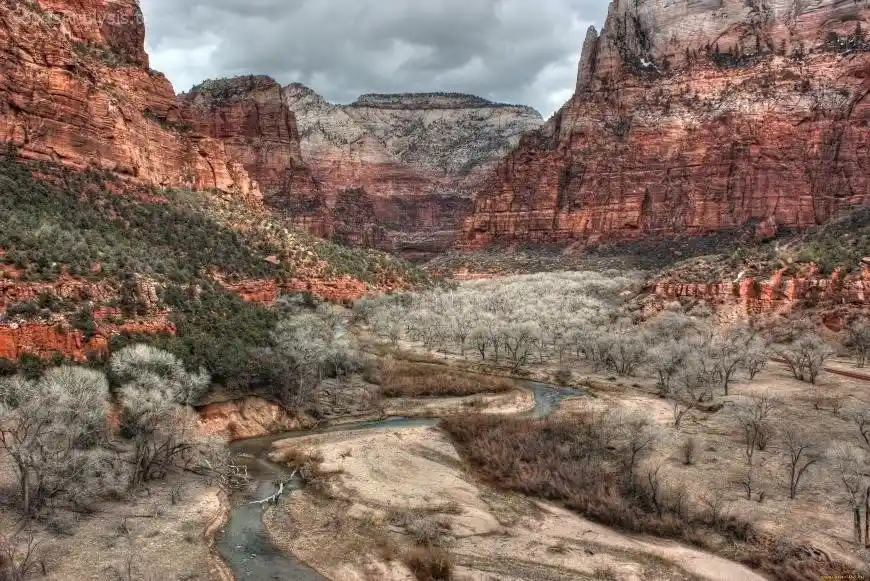
5. Nearby Attractions and Dining Options
Zion is surrounded by a wealth of other attractions that complement your visit to the park:
- Bryce Canyon National Park: About a 1.5-hour drive from Zion, Bryce Canyon is famous for its surreal hoodoos (tall, thin spires of rock). It offers a completely different landscape with its distinctive rock formations and high-altitude trails.
- Kolob Canyons: Located on the park’s northern border, this section of Zion is less crowded and offers hiking, scenic drives, and opportunities for solitude.
- The town of Springdale: Just outside the park entrance, Springdale has a range of dining options, from casual eateries to fine dining. Zion Canyon Brew Pub offers locally brewed beers and hearty food, while The Spotted Dog Café serves up upscale comfort food in a cozy atmosphere.
- Red Rock Grill in Zion Lodge offers a relaxed dining experience with views of the park.
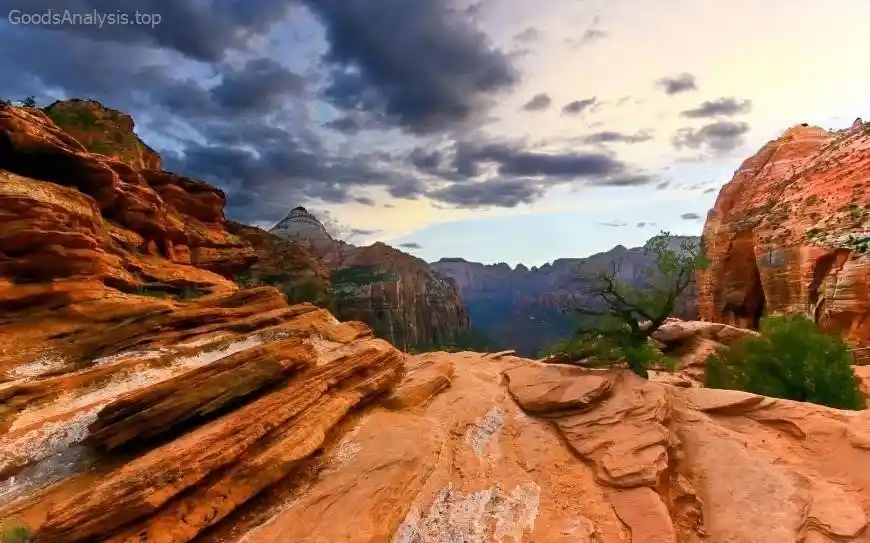
6. Family-Friendly and Group Travel Tips
Zion National Park is an excellent destination for families and groups. Here are a few tips:
- Shuttle System: In peak season, Zion operates a shuttle bus system that helps reduce traffic and provides easy access to the park’s main areas. It’s a great way for families and groups to travel together without the hassle of parking.
- Kid-Friendly Hikes: Trails like the Riverside Walk and Canyon Overlook are great for families with children. The shorter hikes offer plenty of scenery without being too strenuous.
- Group Travel: If you’re traveling with a group, consider booking a ranger-led tour to enhance your experience. These educational hikes can help you connect more deeply with the park’s geology and history.
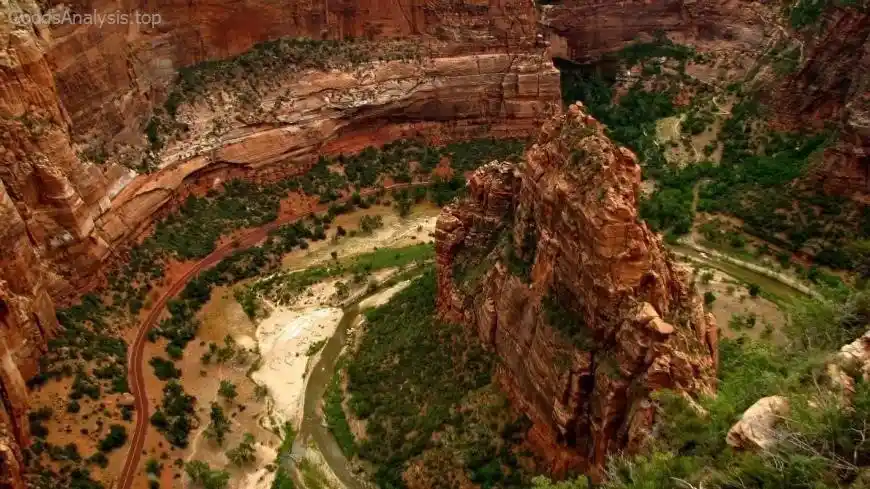
7. Instagrammable Moments and Photo Opportunities
Zion is a photographer’s dream. Whether you’re snapping pictures with your phone or a professional camera, there are plenty of places where you’ll want to stop and capture the moment:
- The Watchman at Sunset: The iconic peak known as The Watchman is best photographed at sunset when the cliffs glow with warm orange and red tones.
- The Narrows: The towering canyon walls of The Narrows, with the river winding between them, make for an epic and unique shot.
- Angels Landing: The views from the summit are extraordinary, with sweeping vistas of Zion Canyon below. It’s one of the most photographed spots in the park.
- Canyon Overlook Trail: This short trail offers a stunning view of Zion Canyon that is perfect for a photo op, especially during sunrise or sunset.
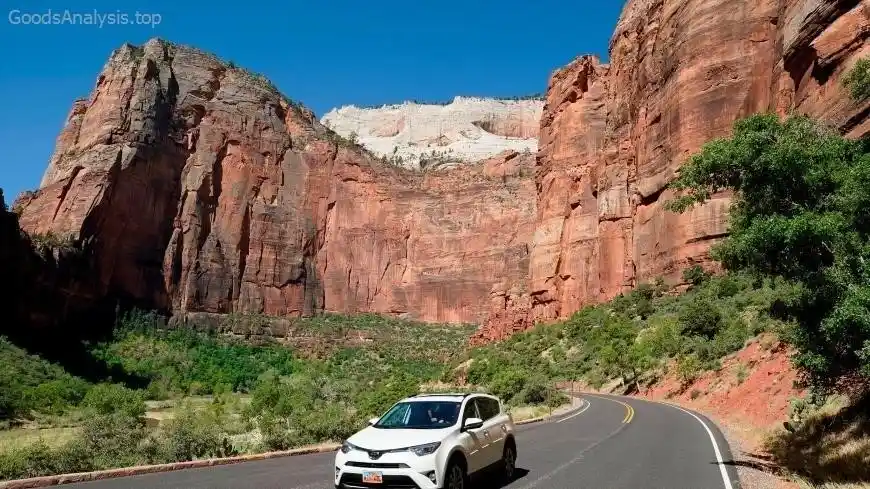
8. Travel Tips and Transportation
Zion is accessible by car, and the closest major airport is in St. George, about an hour away by car. You can also fly into Las Vegas (about 2.5 hours away) or Salt Lake City (4.5 hours away) and rent a car from there.
Getting Around:
- Shuttle System: In peak months (March to late November), the shuttle system is the main mode of transportation within the park. The shuttles are free and run frequently, making it easy to access popular areas like The Grotto, The Temple of Sinawava, and The Court of the Patriarchs.
- Driving: Outside of peak season, visitors can drive through the park. Parking at trailheads can fill up quickly during high season, so plan accordingly.
9. Safety and Etiquette Tips
- Flash Floods: Always check weather conditions before heading out, especially if you’re hiking The Narrows or any other slot canyons. Flash floods are a serious risk in Zion’s narrow canyons, even on sunny days.

